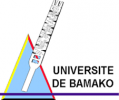The paper analyses the consumption and production behaviour of the Mali’s population by age using
the National Transfer Account approach and household surveys and macroeconomic data. It reveals that between the ages of 28 and 66, Malians generate a surplus of 1,620 billion XOF in 2017.
This sur-plus covers only 46% of the social demand of those under 28 and over 66. Women are in deficit over their life cycle, in other words, their level of consumption remains higher than their level of labour
income, given their late entry into the labour market.
While women consume as much as men over part of the life cycle, they produce 22% of labour income. The results also show that in Mali the level of material well-being measured by consumption declines with age.
En savoir plus







































































